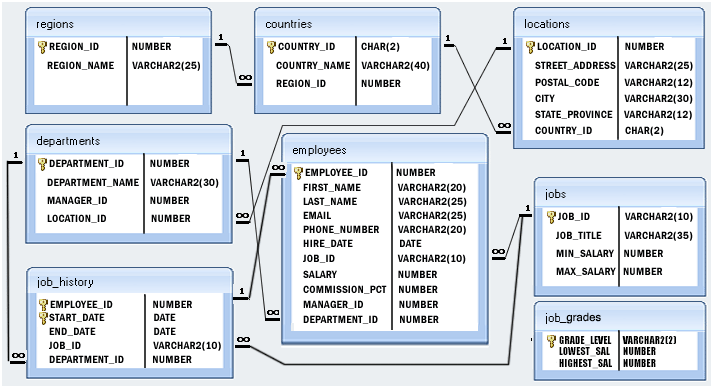SQL Exercise: Information about the department Marketing
5. From the following table, write a SQL query to find the details of 'Marketing' department. Return all fields.
Sample table: departments+---------------+----------------------+------------+-------------+ | DEPARTMENT_ID | DEPARTMENT_NAME | MANAGER_ID | LOCATION_ID | +---------------+----------------------+------------+-------------+ | 10 | Administration | 200 | 1700 | | 20 | Marketing | 201 | 1800 | | 30 | Purchasing | 114 | 1700 | | 40 | Human Resources | 203 | 2400 | | 50 | Shipping | 121 | 1500 | | 60 | IT | 103 | 1400 | | 70 | Public Relations | 204 | 2700 | | 80 | Sales | 145 | 2500 | | 90 | Executive | 100 | 1700 | | 100 | Finance | 108 | 1700 | | 110 | Accounting | 205 | 1700 | | 120 | Treasury | 0 | 1700 | | 130 | Corporate Tax | 0 | 1700 | | 140 | Control And Credit | 0 | 1700 | | 150 | Shareholder Services | 0 | 1700 | | 160 | Benefits | 0 | 1700 | | 170 | Manufacturing | 0 | 1700 | | 180 | Construction | 0 | 1700 | | 190 | Contracting | 0 | 1700 | | 200 | Operations | 0 | 1700 | | 210 | IT Support | 0 | 1700 | | 220 | NOC | 0 | 1700 | | 230 | IT Helpdesk | 0 | 1700 | | 240 | Government Sales | 0 | 1700 | | 250 | Retail Sales | 0 | 1700 | | 260 | Recruiting | 0 | 1700 | | 270 | Payroll | 0 | 1700 | +---------------+----------------------+------------+-------------+
Sample Solution:
-- Selecting all columns from the 'departments' table
SELECT *
-- Specifying the table to retrieve data from ('departments')
FROM departments
-- Filtering the results based on the condition that 'department_name' is equal to 'Marketing'
WHERE department_name = 'Marketing';
Sample Output:
department_id | department_name | manager_id | location_id
---------------+-----------------+------------+-------------
20 | Marketing | 201 | 1800
(1 row)
Code Explanation:
The said query in SQL that retrieves all columns from the 'departments' table where the department name is 'Marketing'. As a result of the query, a list of all rows in the 'departments' table that match the conditions specified in the "WHERE" clause is returned. The "SELECT *" clause retrieves all columns from the table.
Relational Algebra Expression:
Relational Algebra Tree:
Go to:
PREV : Details of employees without any department number.
NEXT : Employees first name does not contain the letter M .
Practice Online
Query Visualization:
Duration:
Rows:
Cost:
Contribute your code and comments through Disqus.
What is the difficulty level of this exercise?
Test your Programming skills with w3resource's quiz.




